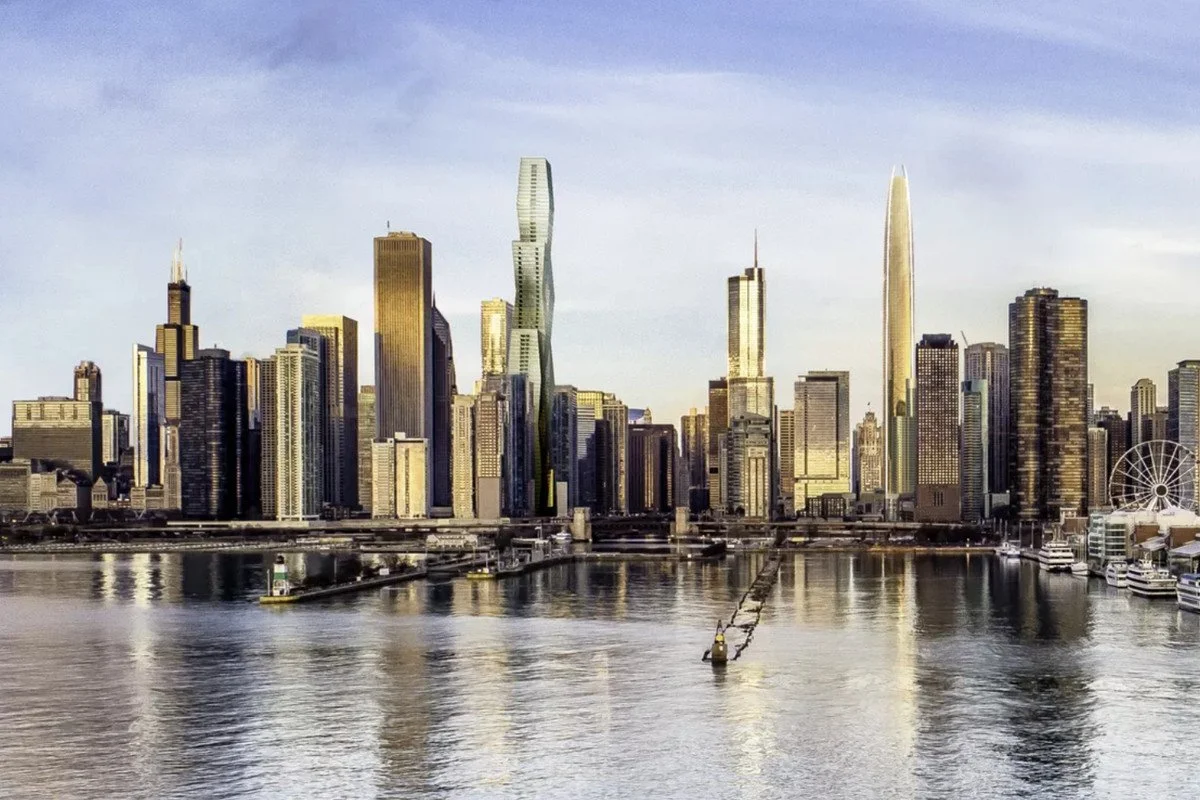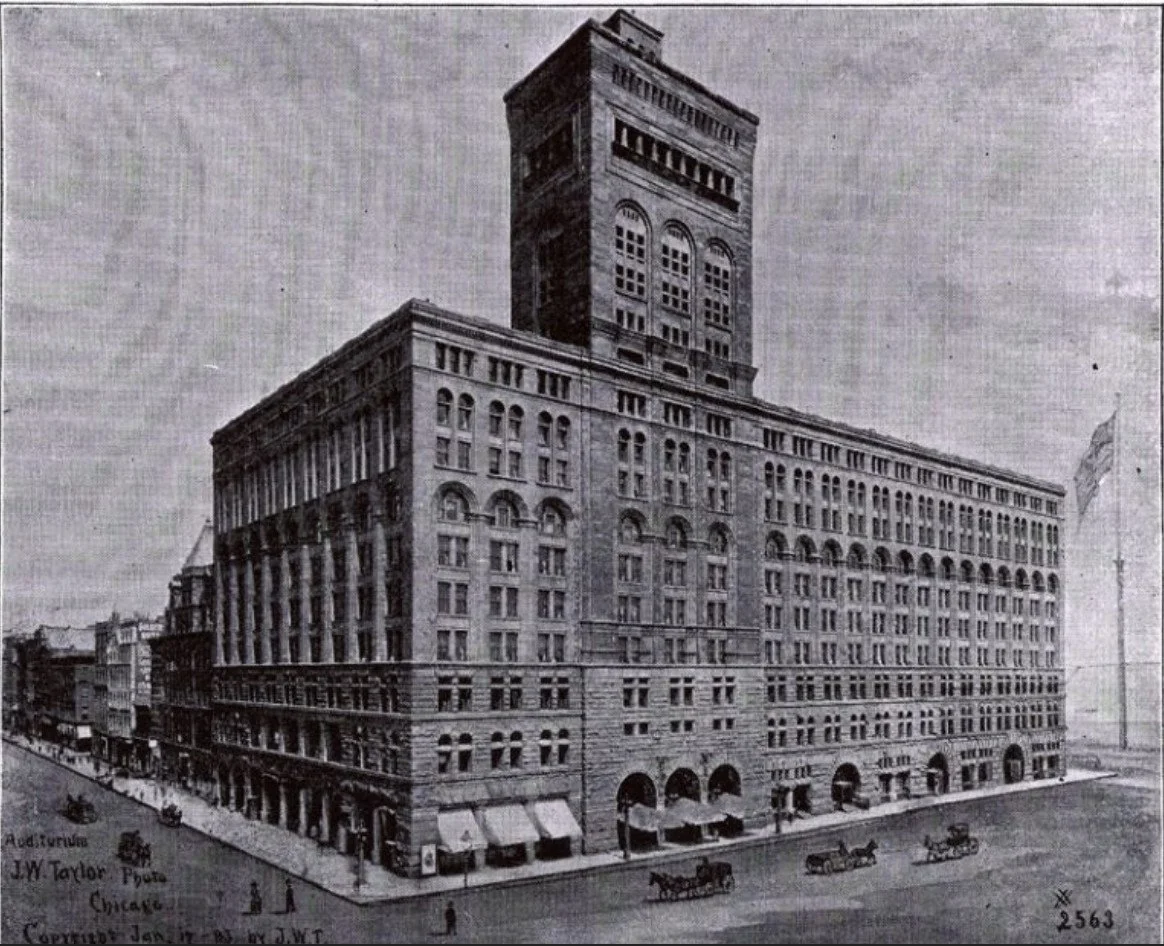The Skyscraper: The Vision of Louis Sullivan, an Irish American
Boston, New York, Chicago… All cities with mesmerizing skyscrapers & architecture that would be hard to replicate in today’s world. The intricate ornamentation and towering buildings have inspired many across the globe, but many don’t know they have Irish America to thank for that inspiration.
Born in Boston, Massachusetts in 1856, Louis Sullivan was raised by a humble Irish American family who migrated from County Cork. Like many Irish American families, the Sullivans found haven in Boston. However, in 1869, Louis’ parents moved to Chicago, leaving him behind with his grandparents in South Reading. After spending his younger years in public schools, he entered the Massachusetts Institute of Technology in 1872, where he spent just a short time studying at their architectural school. His ultimate goal was to study at the Ecole des Beaux-Arts in Paris or become an architect’s apprentice.
After speaking to the famous architect, Richard Morris Hunt, he found what he was looking for in the Philadelphia firm, Furness & Hewitt. Or so he thought… Completing a handful of months of working with this firm, Louis set out for Chicago to join the architectural office of William Le Baron Jenney. Jenney was well known for his involvement with the Chicago School of Architecture, so his value was crucial to Louis’ development. Just a year later, Louis was on to the next big thing though.
In 1874, Sullivan finally made his trek to Europe to be enrolled in the Beaux-Arts. He was successful, but quickly proved to be unpredictable. He would make random trips to Italy as often as he could in that year, inspired by the beautiful architecture of the country. Yet during that short period he was connected to the workshop of Emile Vaudremer, a famous Parisian architect. He may have been unpredictable, but he was a determined young man.
By June of 1875, he was back in Chicago working for a variety of different architectural firms. This is where he would catch his big break! John Edelmann, another popular architect in Chicago, introduced Sullivan to a man named Dankmar Adler. They would later become business partners in 1879. Together they designed more than 100 buildings over a 14-year period. During this time, Louis Sullivan planted his mark in American history as the “father of skyscrapers”.
While a lot of their buildings didn’t “shock the world”, they were commissioned for a project in 1886 that would set them apart from the others. The Auditorium Theatre in Chicago was completed in December of 1889, made completely of granite & limestone. The building stood 10 stories high, with a 17-story tower. The ornamentations and intricate stenciled patterns of the interior showcased the talent Louis had to offer the world.
The Auditorium Theatre in Chicago
The Adler & Sullivan firm ended up moving their offices to the 16th floor of this building during the construction process, which at that time made it the highest offices in Chicago. This same office is where the world-renowned Frank Lloyd Wright was an apprentice of Sullivan for around six years. Though they had a rocky relationship over the years, Wright always offered up appreciation for Sullivan’s influence on his work.
Louis Sullivan completed projects all over the country, but the most well-respected project of his was the Wainwright Building in St. Louis, Missouri. Before the building of this skyscraper, most tall buildings were being built with solid masonry. Architects, like William Le Baron Jenney, had battled with trying to present a different way of building these skyscrapers with a steel frame. Sullivan took on the problem and presented a design that included a 2-story base, where the vertical elements above it are stressed and the horizontals are now minimized by being recessed. He would later use this same idea for the Guaranty Building in Buffalo, New York.
The Wainwright Building
Years later, Sullivan & Adler were chosen to exhibit their talent at the 1893 Columbian Exposition in Chicago. The theme of the exposition was an interpretation of Classical architecture, but all of the projects were painted completely white. Louis, in protest, made sure their Transportation Building project was painted in strong colors, setting it apart from the rest of the exposition. This paid off for Sullivan because Andre Bouilhet, a representative of a decorative-arts union in Paris, noticed this major difference and was inspired. Bouilhet insisted on an exhibit in Paris, showcasing Louis’ work. This exhibit garnered so much interest in Paris that it was later sent across Europe to multiple locations, so that others could be inspired as well. Though his project was so respected in Europe, it didn’t change his feelings towards where architecture in America was headed. He touched on this topic in his autobiography, Autobiography of an Idea, saying, “The damage wrought by the World’s Fair…will last for half a century from its date, if not longer. It has penetrated deep into the constitution of the American mind.”
Fast forward to today and it’s become evident that his concern was valid. Between Modern/Contemporary & Brutalism, architecture has taken a big blow to the beauty it once was. The intricate ornamentation that Louis Sullivan was known for inspired people because you could tell it was done by someone with a passion for creating beautiful works. Sullivan embodied what the Irish have always been known for: passion, beauty, and perseverance. His passion for architecture led a wave of architects who can lay claim to shaping the skylines of America’s cities. His affection for the beauty of the world helped shaped some of the most iconic buildings the world has had the pleasure of seeing. His perseverance shined through his humble upbringing all the way to the top of the world, figuratively & literally. Though modern architecture can diminish the human soul with its uninspiring themes, there are still people on this earth who hold the same light within them that Louis Sullivan showed through his intelligence.
Take notes, Irish America. You come from a long line of inspiring men & women who helped shaped the modern world more than you even realize. YOUR chance to inspire the next generation of the Irish people could be next!
Written by: Fletcher



